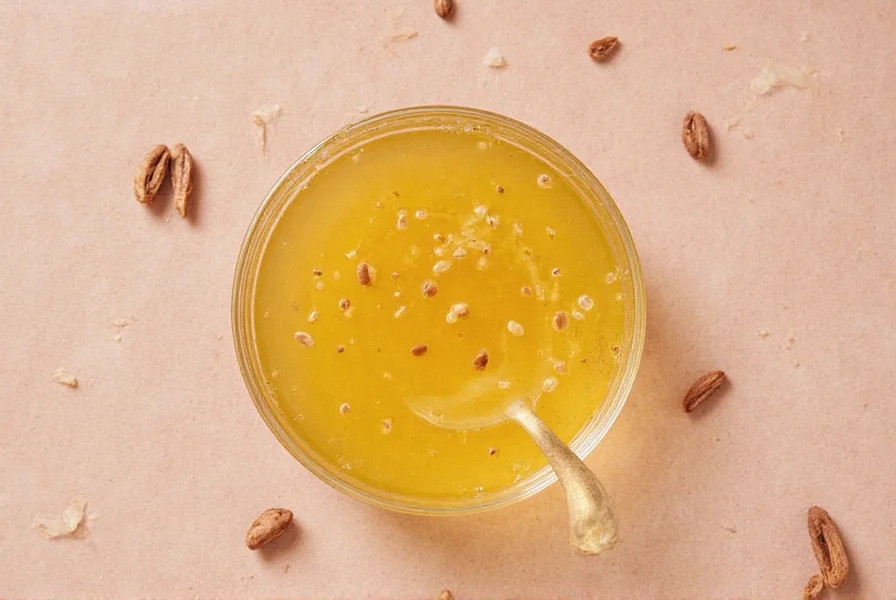Chicken stock and broth are often confused, but they have distinct differences. Stock is made from simmering bones for 4-6 hours, resulting in a rich, gelatinous liquid that's usually unsalted. Broth is made from meat, simmered 1-2 hours, and is pre-seasoned with salt. Use stock for sauces and stews where depth is needed; broth for soups, sipping, or quick dishes where salt content matters. Here's a detailed breakdown of their differences and how to choose the right one for your recipe.
Table of Contents
- What Is Chicken Stock, Anyway?
- Broth Basics: More Than Just Water and Salt
- Stock vs. Broth: Side-by-Side Showdown
- When to Use Which: The Ultimate Kitchen Guide
- Buying Guide: Ready-Made Magic or DIY?
- Frequently Asked Questions: Stock vs Broth
- Conclusion: Know Your Liquids, Own Your Kitchen
What Is Chicken Stock, Anyway?

Let's start from the bones up — literally. Chicken stock is made by simmering chicken bones, usually with some vegetables and herbs, for several hours. The goal here is to extract as much flavor and gelatin as possible from those bones, creating a rich, full-bodied liquid.
Key Characteristics of Chicken Stock:
- Made mostly from bones
- Long simmer time (usually 4–6 hours)
- High in collagen and gelatin
- Often unseasoned or lightly seasoned
- Thicker mouthfeel when cooled
Because it's bone-heavy, chicken stock has a more robust and complex flavor compared to broth. This makes it ideal for dishes where depth of flavor is key — think soups, stews, risottos, and sauces.

Broth Basics: More Than Just Water and Salt

Now let's flip the bird — chicken broth is typically made from meaty parts of the chicken, sometimes including some bones, and is cooked for a shorter period than stock. Because of this, it tends to be lighter both in texture and flavor.
What Defines Chicken Broth?
- Mainly made from meat (not bones)
- Shorter cooking time (about 1–2 hours)
- Usually fully seasoned with salt and spices
- Cleaner, brighter flavor profile
- Thinner consistency
Broth is perfect when you want something comforting yet light — like a quick soup, a steaming mug of miso, or even as a base for poaching proteins. Since it's often pre-seasoned, you have to be careful with adding extra salt when cooking.

Stock vs. Broth: Side-by-Side Showdown
Still confused? Let's put these two head-to-head in a handy comparison table so you can see the differences clearly:
| Aspect | Chicken Stock | Chicken Broth |
|---|---|---|
| Primary Ingredient | Bones | Meat |
| Cooking Time | 4–6 hours | 1–2 hours |
| Texture | Thicker, more gelatinous | Thin, watery |
| Seasoning | Lightly seasoned or unsalted | Pre-seasoned (often salty) |
| Ideal For | Soups, sauces, reductions | Drinking, poaching, quick meals |

When to Use Which: The Ultimate Kitchen Guide

Now that you know the difference, let's talk usage. Here are some practical tips to help you choose wisely in your next culinary adventure:
Use Chicken Stock When...
- You're making a long-cooked dish like stew or braise
- You want a richer, deeper flavor
- You need a good base for sauces or reductions
- You prefer control over salt levels
Use Chicken Broth When...
- You're short on time and need something fast
- You're making a delicate soup or broth-based dish
- You want a ready-to-drink option (like sipping straight from a mug)
- Your recipe already includes other salty ingredients

Buying Guide: Ready-Made Magic or DIY?

If you're pressed for time or just starting out in the kitchen, store-bought options can be a lifesaver. But not all products are created equal. Here's what to look for and which ones to grab off the shelf.
Top 5 Store-Bought Options for Every Budget
- Swanson Natural Goodness Chicken Broth
Perfect for everyday cooking. Light, flavorful, and affordable. - Kitchen Basics Unsalted Chicken Stock
Great for chefs who like to season their own dishes. Rich and versatile. - O Organics Organic Low Sodium Chicken Broth
Organic option with reduced sodium — ideal for health-conscious cooks. - Imagine No Chicken Broth (Vegan Option)
For plant-based diets, this mushroom-based broth mimics chicken flavor beautifully. - Blue Diamond Almond Breeze Chicken Flavor Broth (Dairy-Free & Gluten-Free)
Specialty broth great for those with dietary restrictions.
Things to Look For When Buying:
- Sodium Content: Check labels carefully — some broths are very high in salt.
- Ingredients List: Fewer additives mean better flavor and healthier eating.
- Unsalted vs. Regular: Opt for unsalted if you want to control seasoning.
- Organic / Grass-Fed / Free-Range Claims: Worth considering for premium quality.

Frequently Asked Questions: Stock vs Broth
Here are answers to the most common questions people have about chicken stock and chicken broth:
What are the 3 most important differences between chicken stock and broth?
The three must-know differences are: 1) Stock is made primarily from bones while broth is made from meat, 2) Stock simmers much longer (4-6 hours vs 1-2 hours), and 3) Stock is typically unsalted while broth comes pre-seasoned with salt and other seasonings.
Can I substitute stock for broth (or vice versa) in recipes?
Yes, but with caution. Stock will give more body and richness but may need additional seasoning. Broth is saltier and thinner, so you might need to reduce it or adjust salt. For sauces and reductions, stock is usually better. For soups you'll drink directly, broth works well.
Why does stock become gelatinous when cooled?
This gel-like texture comes from the collagen extracted from bones during the long simmering process. As it cools, this collagen solidifies into gelatin - a sign you've made a quality stock with good body and mouthfeel.
Is bone broth the same as chicken stock?
Bone broth is similar to stock but simmers even longer (12-24 hours) to extract maximum nutrients and collagen from bones. It's become popular for alleged health benefits, though scientifically these claims are debated. Traditional stock is typically simmered 4-6 hours.
How can I make store-bought broth taste more like stock?
To boost store-bought broth: Simmer it with chicken bones, feet, or wings for 2-3 hours; add a tablespoon of unflavored gelatin; or reduce it by simmering uncovered to concentrate flavors and thicken the texture.
Can I freeze homemade stock or broth?
Absolutely! Both freeze well for up to 6 months. For convenience, freeze in ice cube trays first, then transfer cubes to freezer bags. This lets you use just the amount you need for future recipes without thawing an entire container.
Conclusion: Know Your Liquids, Own Your Kitchen

The difference between chicken stock and broth might seem small at first glance, but understanding it can make a world of difference in your cooking. Whether you're slow-simmering bones for a rich, gelatin-packed stock or grabbing a carton of broth for a quick weeknight dinner, knowing when to use each will elevate your meals and save you time and frustration.
So next time you reach for that bottle or bag, take a second to ask yourself: am I building a foundation or finishing a flavor? And remember — it's not just about what's in the pot; it's about how you use it.











 浙公网安备
33010002000092号
浙公网安备
33010002000092号 浙B2-20120091-4
浙B2-20120091-4